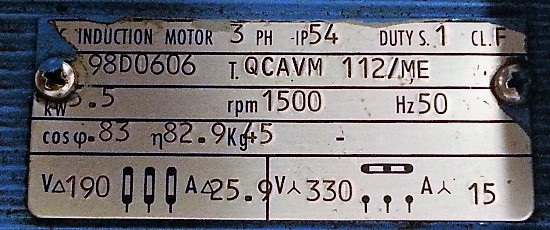When a customer asks us what drive he should choose to replace a damaged one, the first question we ask is always the same: what kind of motor does the converter control?
The motor data needed are:
- Type (e.g. DC, brushless, induction)
- Electrical specifications (e.g. armature current, supply voltage)
- Type of speed transducer mounted (e.g. tacho, resolver, encoder)
- Type of machine on which the motor is mounted (e.g. machine tool, rotary printing press)
- Machine function that the engine performs (e.g. spindle motor, axis motor)
- Equipment already available (e.g. inductors, EMC filters, braking resistors)
In addition, it is helpful to know what type of power device was used by the previous converter (e.g. SCR, IGBT). This is useful to both address the choice of the new converter and prevent any possible problem of electromagnetic compatibility.
The answer to these questions is not always easy: let’s see from where you can start.
Wiring diagrams
On the machine wiring diagrams, manufacturer and model of the converter and of the motor are usually provided: here we find the wiring diagram between motor and converter. This information greatly simplifies the identification and the setting up of the drive unit.
The motor plate
From the motor plate it is possible to find the motor electrical parameters which are essential to choose the right converter.
This information is usually sufficient, but if the circuit diagrams is not available, we will then have to work harder to establish the exact power connections and, if necessary, to work our way back to the pin function of the speed transducer connector.
Characterization of the motor on test bench
If wiring diagrams and engine plate are missing, it is possible to characterize the motor through a properly equipped test bench. This test is usually expensive but allows you to discover the electrical parameters of the motor; it can be performed in specialized centres or by electric motors manufacturers.
Reverse thinking
Sometimes the information is only partial because there are no wiring diagrams available or because the plate is scarcely legible. In these cases, if you do not want to characterize the motor on the bench, we can start identifying the type, brand or model of the motor and go back to the main electrical parameters through consecutive tests on the machine and on the motor. This work can be time consuming and usually does not lead to a clear determination of the motor parameters but only to an estimate.
ALTER Elettronica: the pre-sales service
Send us the photos of your motor plate and wiring diagrams together with a brief description of the machine, the motor function within the machine and the accessories that are present in the control cabinet, such as braking resistance and three-phase chokes: together we will find the solution that best suits your needs.

